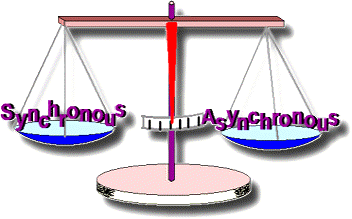
Haefner (2000) states some ideas that are relevant at the time of thinking in the development of a community in language learning. According to him, it is known that web-based courses lack the energy of F2F classes, and this thought brings to mind what is stated by Oblinger & Oblinger (2006), they say that many institutions are finding that students will assume responsibility for self-scheduling and self-policing. The gap between the responsibility of the learners and the lack of F2F energy in web-based courses must lead us to think in synchronous and asynchronous communication. We must think of classes that may have the energy that F2F classes demand, in order to do this, synchronous communication, through the use of skype, of chats, help us keep in mind the spontaneous thoughts that F2F classes have. However, asynchronous communication can guide us into a better thought when we reflect about certain topics, and allow narrowing the aspects that come up when discussing a topic. Sometimes F2F classes tend to make thoughts of the participants of the class become too general and even out of context.
The pedagogical implications of Haefner’s article (2000), rely on making teachers give a closer thought to the aspect of synchronous and asynchronous communication in our classes. He allows us to think beyond web-based classes, and also reflect on our F2F classes that use these types of communication. The concluding aspect of this article rely on keeping in mind a balance between these two types of communication because they both have positive aspects that can enhance our classes, but also they have drawbacks that can be overcome through the interaction of asynchronous and synchronous communication.

No comments:
Post a Comment